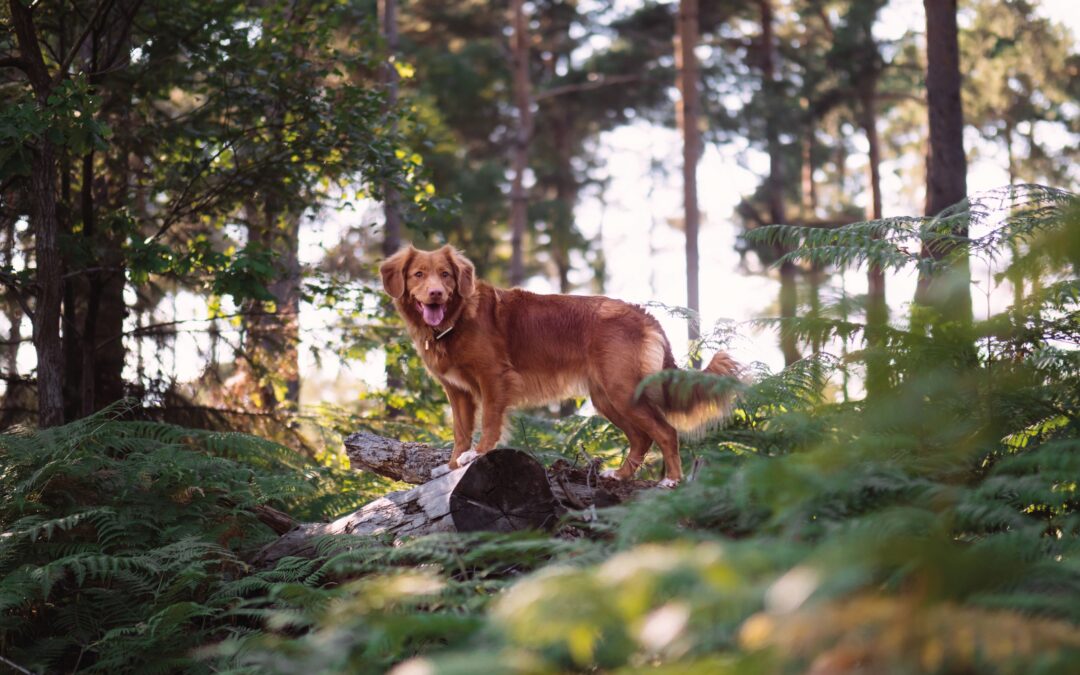Summer is not far off. The weather is changing and so is the rest of the environment. For dog owners there are various hazards associated with the outdoors to be aware of.
There are well-known dangers associated with higher temperatures, especially for short-nosed breeds, more than usually prone to breathing issues. Hot pavements and tarmac can burn the paws of any dog. Of course, we never leave our dog in a locked car, without sufficient ventilation.
Grassy areas seem the ideal place for a scamper, but grass seed can easily get embedded in ears, paws and other parts of the body, sometimes leading to major infection and even long- term damage to ear canals. Think twice about where you let your dog play off lead. As a precautionary measure it is important to be able to inspect your dog after play, examining ears and between paw pads. If your dog is resistant to handling seek advice on how to improve this vital aspect of pet care.
There are also dangers for dogs around ponds, lakes, reservoirs, or rivers. Some breeds are innately attracted to water and the prospect of a dip or a drink, especially on a hot day, is irresistible to some hounds.
Quite aside from the risks swimming dogs may present to other animals living near or in the water- at least one goose had been attacked in Peckham Rye park- there is often a rat population and the possibility of contracting Leptospirosis from water infected with rat urine.
Another big consideration in hot weather is the potential buildup of blue green algae. This is more likely to be found on inland waterways but sometimes even in the sea. Last summer there were reports from around the country of pet dogs dying after exposure to blue green algae, even in London Parks. Post mortems on dogs that died after contact with water in Higham Park Lakes in North London and Bushy Park, in Richmond, revealed suspected blue green algae toxicity. At the time, warnings had been issued against humans swimming or fishing and against allowing dogs into the water.
Blue green algae are not a type of micro plant species but describes a range of clump-forming bacteria, some of which are not only toxic to humans but, according to the Blue Cross Animal Charity, can kill a dog between 15 minutes to an hour after ingestion. The problem is the dog does not have to actively drink the water, but can ingest the bacteria by licking their fur after swimming. The bacteria produce toxins which cause the liver to shut down. Dogs that survive exposure may suffer long-term health issues.
Affected dogs will show the usual signs of toxicity; vomiting, diarrhoea, staggering, seizures, breathing problems, drooling and collapse. If you have any reason to think your dog has been exposed then get to a vet immediately. Every second counts. There is no antidote, but your vet will take all available measures to remove the toxin and stabilise your dog.
As temperatures begin to climb look out for the following:
- The appearance of greeny- blue or brownish ‘paint streaks’ on the water’s surface
- Foam at the edges of the water
- Green, blue or brown collections of what look like algae on the water’s surface
- A blue green surface scum, a bit like pea soup
Report any suspected outbreaks to the Environment Agency on their 24- hour hotline on 0800 807060 and, if you can, to the local parks authority.
Leonie St Clair www.londondogstraining.co.uk

